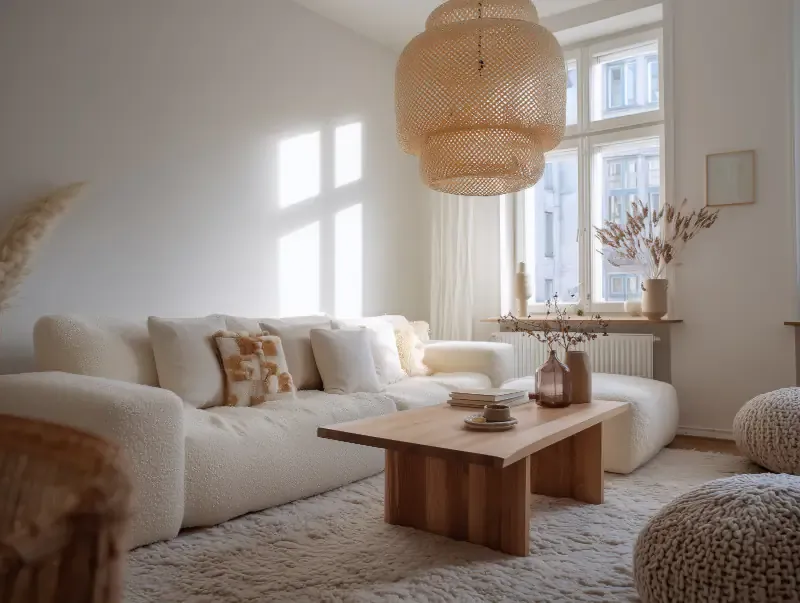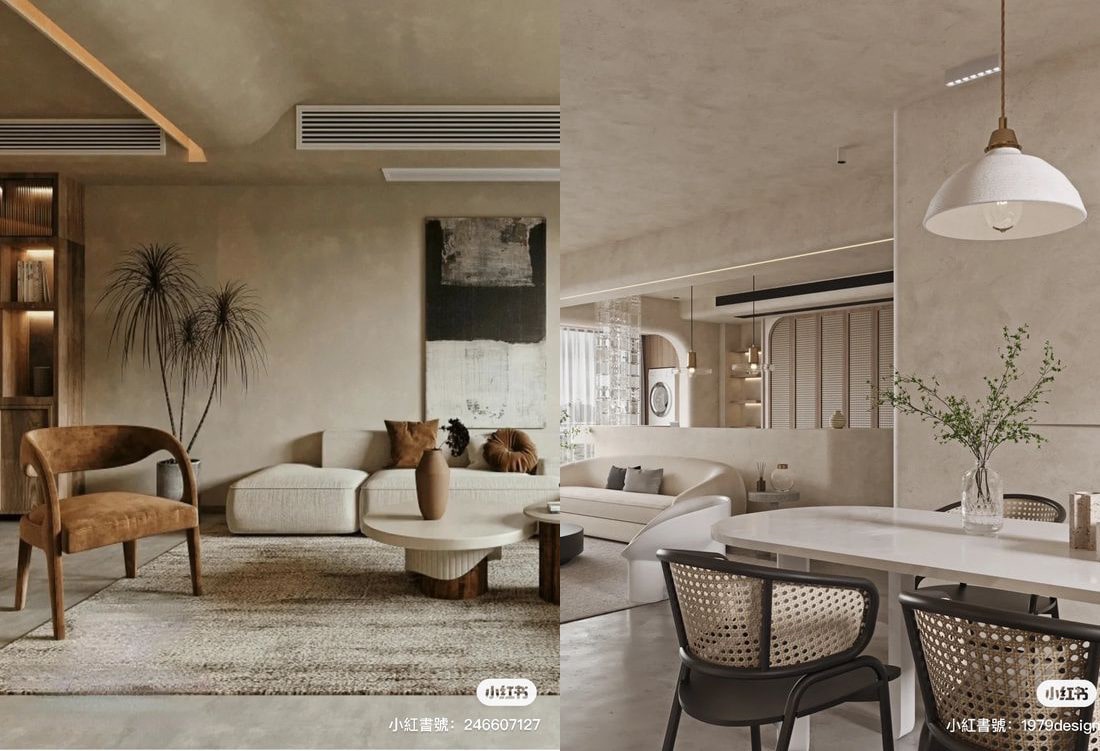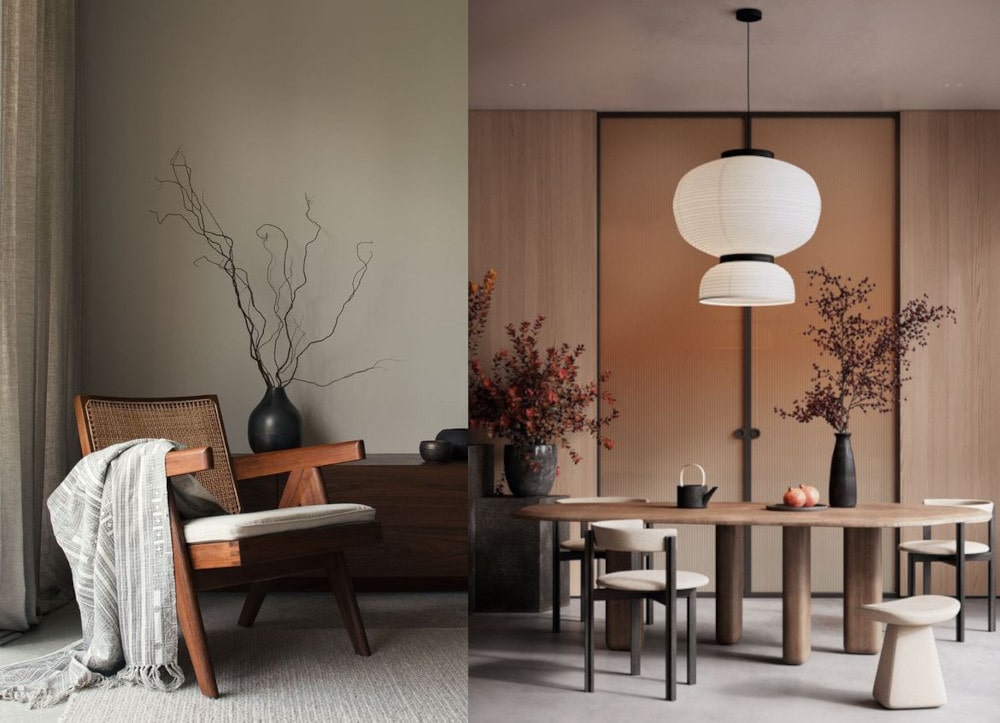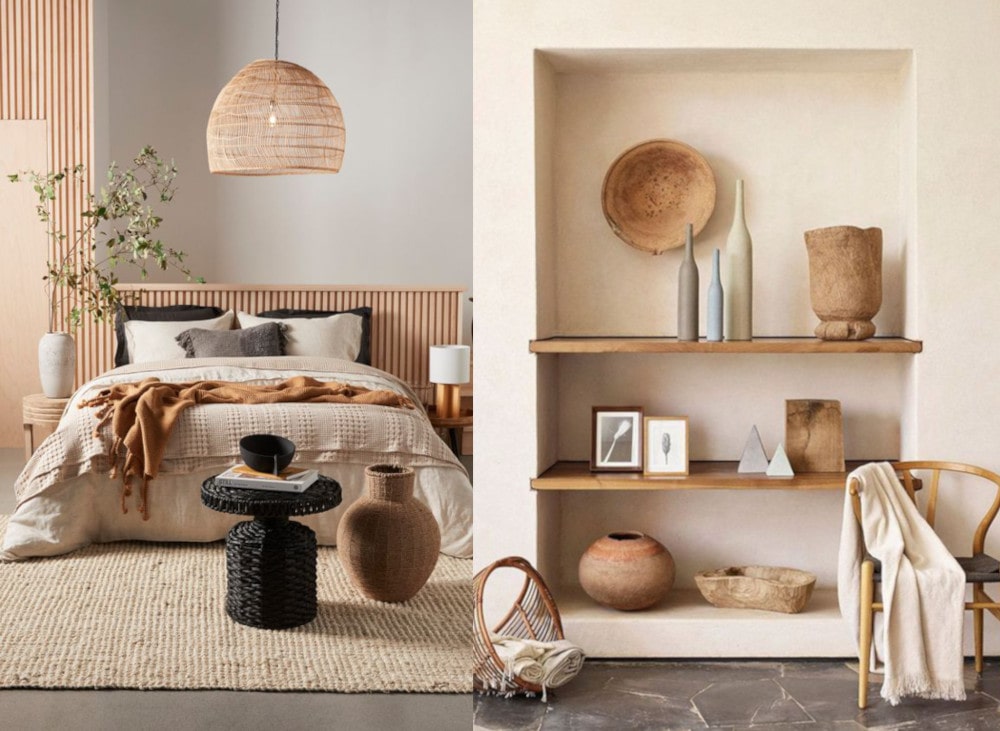
Japandi Interiors
The Minimalist Fusion of Japanese and Scandinavian Design
Japandi is a design style that combines elements of Japanese and Scandinavian design. It is characterized by a minimalist aesthetic, with a focus on natural materials and clean lines. The style often incorporates elements such as bamboo, wood, and paper lanterns from Japanese design, and blonde woods, white spaces, and geometric shapes from Scandinavian design. Japandi is known for its simplicity, functionality, and balance, and it is becoming increasingly popular in interior design and home decor.
Are Japandi and Wabi-sabi the same?
Some people compare Japandi to Wabi Sabi. Japandi and Wabi-sabi are both design styles that originate from Japan, and share some similarities in their aesthetic and philosophy.

Japandi is a fusion of Japanese and Scandinavian design, and it combines elements of minimalism and functionality from both cultures. It is characterized by a clean and simple aesthetic, with an emphasis on natural materials and a neutral color palette.
Wabi-sabi, on the other hand, is a traditional Japanese aesthetic concept that emphasizes the beauty of imperfection, impermanence, and simplicity. It is about finding beauty in the natural, the aged, the organic and the irregular, and it is an important aspect of Japanese design and culture.
Both Japandi and Wabi-sabi value simplicity, natural materials, and the beauty of imperfection. Japandi may incorporate the natural elements and minimalism of wabi-sabi with the clean lines and functionality of Scandinavian design.
In summary, Japandi is a design style that combines Japanese and Scandinavian design elements, while Wabi-sabi is a traditional Japanese aesthetic concept. Japandi may incorporate Wabi-sabi elements such as natural materials and minimalism, but it is not the same thing as Wabi-sabi.
Ways to Create a Japandi Style Interior
Walls
Limewash is a traditional paint made from slaked lime and natural pigments, which gives it a unique, soft, and muted color palette.
- Use white egg-shell shades of wall paint.
- Greige colors are also perfect for a japandi style interior.
- Limewash painted walls can be a great way to incorporate the natural and minimalistic elements of Japandi interior design.

Limewash comes in a variety of natural colors, such as white, gray, and beige. These colors can be used to create a neutral and minimalistic backdrop for your Japandi interior. Limewash has a slight patina effect, which gives the walls a lived-in look that is in line with the Wabi-Sabi aspect of Japandi. This can add a sense of authenticity and timelessness to your space.
Furniture

Furniture is an important aspect of Japandi interior design, as it helps to create a sense of balance and functionality in the space. Here are a few types of furniture that can be used to create a Japandi interior:
-
Bamboo furniture: Bamboo is a traditional material used in Japanese design, and it can add a natural and organic element to your Japandi interior. Bamboo furniture such as chairs, tables, and screens can be used to create a sense of simplicity and elegance.
-
Wooden furniture: Wooden furniture is also commonly used in Japandi interiors, as it can add a sense of warmth and coziness to the space. Wooden pieces such as low-slung sofas, dining tables, and coffee tables can be used to create a sense of balance and functionality.
-
Minimalistic furniture: Japandi interiors are characterized by their minimalistic aesthetic, so it's important to choose furniture that is simple and functional. Minimalistic furniture such as platform beds, modular shelves, and storage cabinets can help to create a sense of order and simplicity in the space.
-
Futons and Tatami: These are traditional Japanese beds and matting made of rush or straw. They can be used to add a traditional touch to the space and can be perfect for a guest room.
-
Wabi-Sabi furniture: Wabi-sabi is an important aspect of Japandi, so incorporating furniture that is slightly imperfect, aged, and has a natural patina can help to create a sense of authenticity and timelessness in the space.
It's important to note that Japandi is a fusion of two different styles, so you don't have to limit yourself to Japanese or Scandinavian furniture only. The key is to create a balance and harmony between the two.
Decoration

Decorating a Japandi interior can be a fun and creative process, as it allows you to combine elements of Japanese and Scandinavian design to create a unique and balanced space. Here are a few ways you can decorate your Japandi interior:
-
Use natural materials: Japandi interiors are characterized by their use of natural materials, such as bamboo, wood, and paper. Incorporating these materials in your decor, such as through natural fiber rugs, wooden bowls, or bamboo baskets, can help to create a sense of warmth and coziness in the space.
-
Incorporate traditional Japanese elements: Traditional Japanese elements such as paper lanterns, shoji screens, and sliding doors can add a sense of authenticity and timelessness to your Japandi interior.
-
Add plants: Plants can add a sense of life and vitality to your Japandi interior. Incorporating a variety of indoor plants, such as ferns, succulents, or bamboo, can help to create a sense of balance and harmony in the space.
-
Use neutral colors: Japandi interiors are characterized by their neutral color palette, so it's important to choose decor items that are in line with this aesthetic. Neutral colored decor items such as white porcelain vases, gray woolen throws, or beige linen cushions can help to create a sense of calm and simplicity in the space.
-
Incorporate Wabi-Sabi elements: Wabi-Sabi is an important aspect of Japandi, so incorporating decor items that are slightly imperfect, aged, or have a natural patina can help to create a sense of authenticity and timelessness in the space.
-
Incorporate geometric shapes: Scandinavian design is known for its use of geometric shapes, so incorporating decor items with geometric patterns or shapes, such as textiles, ornaments, or lighting fixtures, can help to create a sense of balance and harmony in the space.
-
Create a focal point: A focal point can help to draw attention and create a sense of interest in your Japandi interior. This can be achieved by adding a statement piece of furniture, a large piece of artwork, or a unique decor item.



